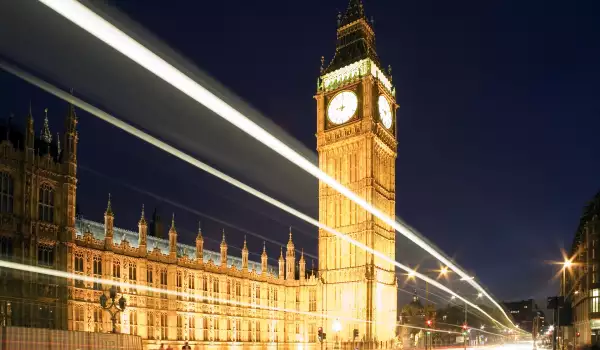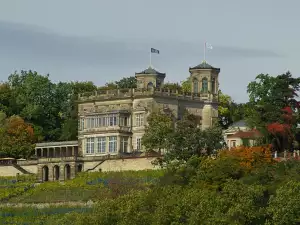Westminster Palace

Perhaps the most memorable view of the British capital - London, is the imposing architecture of Westminster Palace, which stands proudly for centuries to the north bank of the River Thames.
The huge complex of the Westminster Palace is situated in the most relevant part of London - Westminster. Palace of Westminster includes some of the biggest cultural and historical attractions of the British capital - the English Parliament, Big Ben and Westminster Abbey. In 1987 the entire complex in Westminster is listed as a UNESCO World Heritage Site.

Today Westminster Palace was the seat of both chambers of Parliament of the United Kingdom - House of Commons and House of Lords. In its current form, this landmark building in London was built in the 19th century, but it still keeps the structures that date back to the original appearance of the architectural ensemble. This is Westminster Hall, which is now used for major public ceremonial events and the Jewel Tower, known as the Tower of Jewels.
A large body of the Westminster Palace includes a total of 1100 rooms, 100 staircases and corridors that go a length of 5 km. After the last huge fire in 1834 the major restoration of the Westminster Palace began which lasted over the following 30 years. The restoration also included the ruins of Westminster Hall and the Chapel of St Stephens. The project was the work of Sir Charles Barry (1795-1860), who worked with his assistant Augustus Welby Pugin.
In place of the Westminster Palace was an imposing building from the Anglo-Saxon times. Westminster Palace is the main residence of the monarch yet in the Middle Ages it remained a royal residence until 1512 when a fire destroyed part of the building.
As originally a royal residence, the palace of Westminster did not have included rooms specially built for both chambers. The House of Lords first sat in the modest medieval hall in the southern part of the complex known as the Queen's Hall. Later the upper house was in a big white room, which previously was used by the Court of Claims.
After the fire in 1834, Westminster Hall, the Tower of jewels, the crypt chapel of St Stephens and the galleries were the only surviving parts of the whole structure. During World War II the palace was hit by bombs 14 times. The most destructive was the bombing of May 10th, 1941, when communities were devastated and three people were killed. On June 17th, 1974 the Westminster Hall broke the 9-pound bomb set by the IRA.
It causes significant damage and injuries to 11 people. In 2004, Prime Minister - Tony Blair was pelted with flour bombs from the galleries. As a result, the rules for admission to visitors at Westminster Palace were changed. A written pass from a member of parliament, stating that the visitor is a personal friend is now needed to entry.
Among the most remarkable parts of the palace is Westminster Hall. It is the oldest part of the hotel and was built in 1097. For this time the hall in Westminster Palace was the largest in Europe. From 12th to 19th century the hall consisted of services in honor of the new Monarchs. The year 2002 saw the last burial of royalty and that was the Queen Mother Elizabeth.

At the southern end of Westminster Palace stands the House of Lords. It is remarkable for its lavish decorations. The length of the room reaches 24.4 m and 13.7 m wide. All the furniture for the audience of the House of Lords is black. Everywhere there are beautiful stained glass windows and murals representing religious scenes, chivalry and law. At the southern end of the hall is the lavish royal throne and canopy.
The most famous and beloved of Londoners is the iconic Big Ben clock tower. Big Ben reaches a height of 91.4 m and impresses with its five bells, beating every 15 minutes.
Another tower at Westminster Palace is the central tower, which rises to 91.4 m. The highest part of the complex remains the square Tower or Victoria Tower which is in the southwest part of Westminster Palace. It has a record height of 98.5 m.















